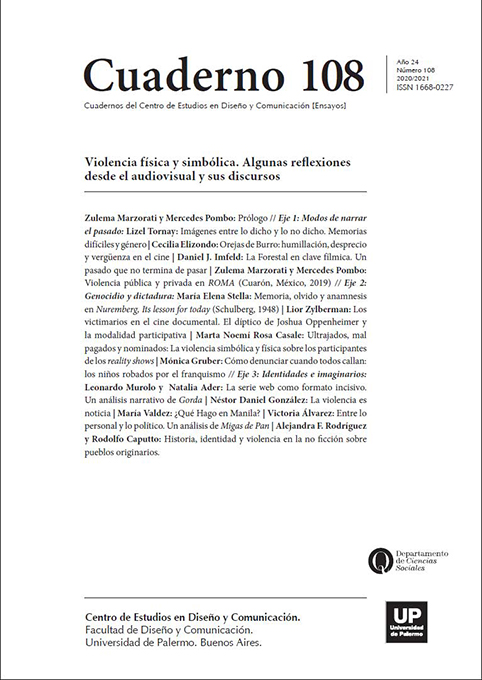Memoria, olvido y anamnesis en Nuremberg, Its lesson for today (Schulberg, 1948)
Abstract
According to Henry Rousso, the memory of traumatic historical events generally goes through a ternary sequence of identifiable stages. The first takes place with the immediate end of the genocide, dictatorship or violent process, at which time the initial debates take place regarding the punishment of the victimizers, the situation of the victims, their testimonies and the first reparations are established. In the second stage, forgetfulness, amnesties and silence about the crimes of the past are more functional to the claims of physical reconstruction, reconciliation and national unity. But, sooner or later, the third moment comes, that of the anamnesis, the desire to reopen the violent past, to continue the legal processes and the works of memory. In the case of the Shoah, the first stage extends from the defeat of Nazism in 1945 and the immediate post-war period. The second moment covers the fifties and sixties. The anamnesis period, which began in the late 1970s, gained phenomenal momentum with the fall of the Berlin Wall and the USSR to become, in the era of globalization, the universal trauma of the West. This article deals with the memory of the Holocaust and within this wide universe of representations the film Stuart Schulberg, Nuremberg, Its lesson for today (1948) has been selected. The documentary - built with archive images created by the Nazis, from the concentration camps made by the allies at the time of liberation and the Nuremberg Trial was shown between 1948 and 1949 and aimed to raise awareness and denazify the Germany of the postwar period. Then he went through a period of concealment and oblivion for more than sixty years. It was never shown in the US or the rest of Europe until it was rescued and restored by the director's daughter, Sandra Schulberg and Josh Waletzky, in 2009. We consider the film to be significant, not only because its own story is linked to the different moments in the memory of the Shoah, but because, in addition, and, fundamentally, it accounts for the ways of conceiving and representing the past throughout six decades.
References
Baer, A. (2005). El testimonio audiovisual. Imagen y memoria del Holocausto. Madrid: Coedición CIS Entro de Investigaciones sociológicas y Siglo XXI número 219.
Feierstein, Daniel (2015) Juicios. Sobre la elaboración del genocidio II. Buenos Aires: Fondo de Cultura Económica.
Fledelius, K. (1980) "Fields and Strategies of Historical Films Movies Analysis”, in: Fledelius, Karsten and Short, Robert, Studies in History, Film and Society. Copenhagen: Eventus.
Huyssen, A. (2002). En busca del futuro perdido. Cultura y memoria en tiempos de globalización. México: Fondo de Cultura Económica.
Rosenstone, Robert (1997.) El pasado en imágenes. El desafío del cine a nuestra idea de la historia. Barcelona: Ariel Rousso, H. (2015). “Hacia una globalización de la memoria”, en Nuevo Mundo. Nuevos Mundos. 18-09-2015. https://journals.openedition.org/nuevomundo/68429. Consultado el 7 de Febrero de 2020.
Traverso, E. (2009). A sangre y fuego. De la guerra civil europea, 1914-1945), Buenos Aires: Prometeo.
Zylberman, L. (2018). “Genocidio y Cine Documental. Funciones, temas y estilos”. Actas del VI Congreso Internacional de la Asociación Argentina de Estudios de Cine y Audiovisual, (ASAECA), Santa Fe, Argentina. http://asaeca.org/wp-content/uploads/2017/11/Librode-actas-AsAECA-2018-2-1.pdf. Consultado 1 de marzo de 2020.
Los autores/as que publiquen en esta revista ceden los derechos de autor y de publicación a "Cuadernos del Centro de Estudios de Diseño y Comunicación", Aceptando el registro de su trabajo bajo una licencia de atribución de Creative Commons, que permite a terceros utilizar lo publicado siempre que de el crédito pertinente a los autores y a esta revista.


